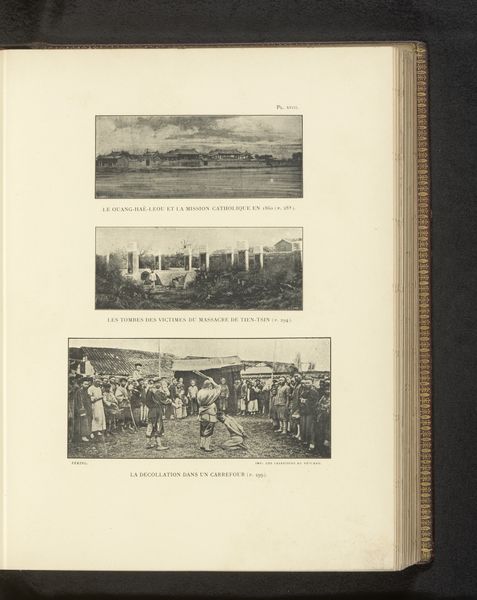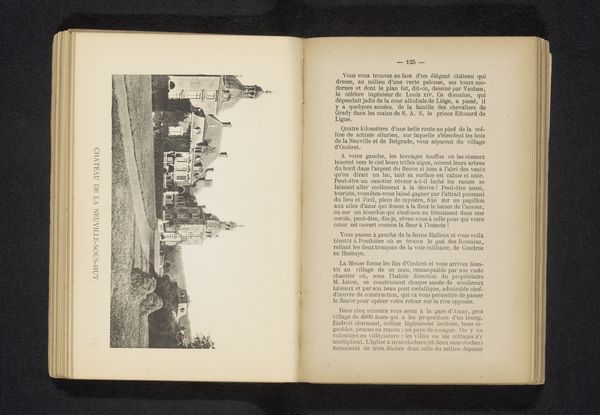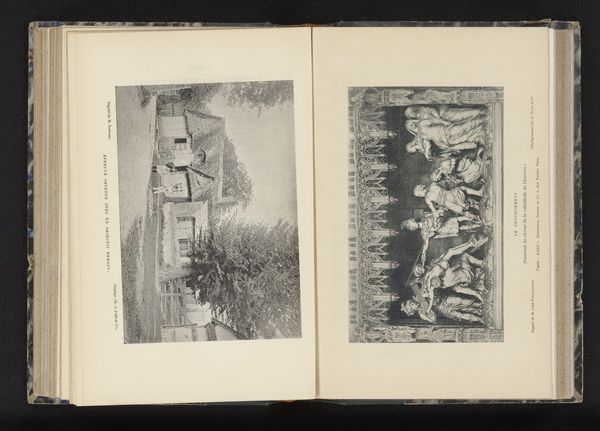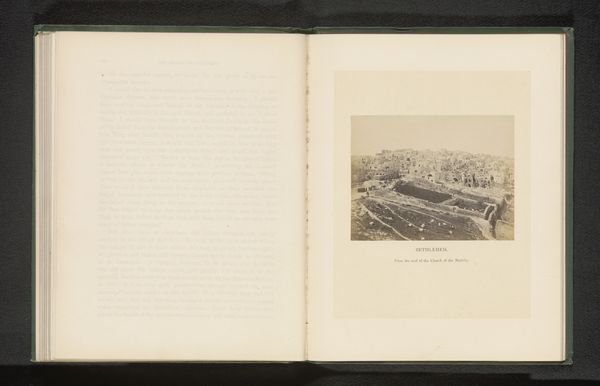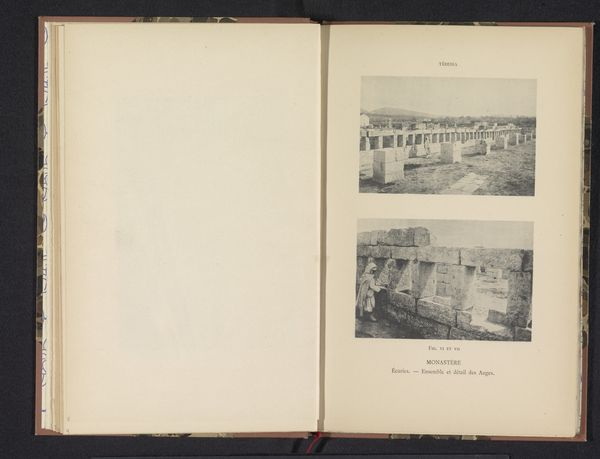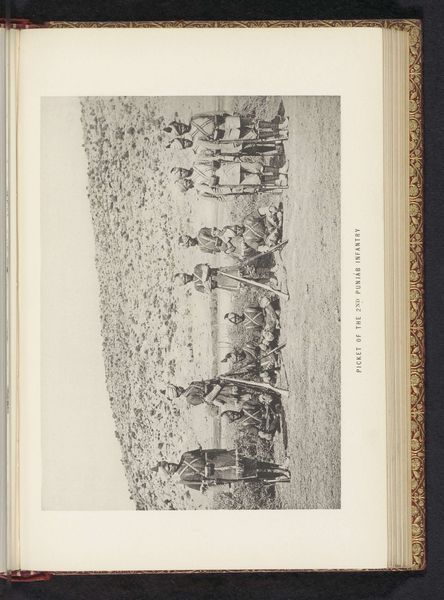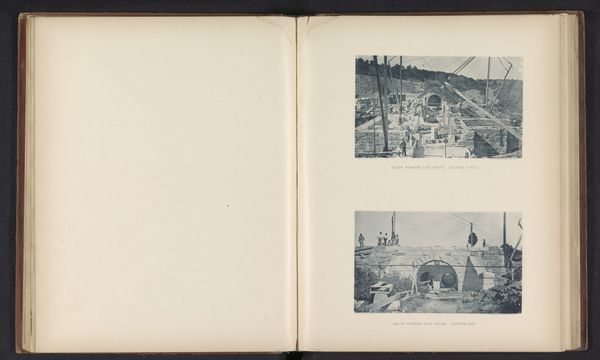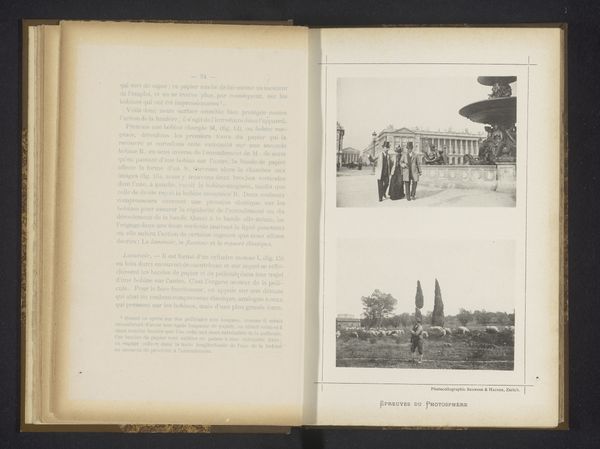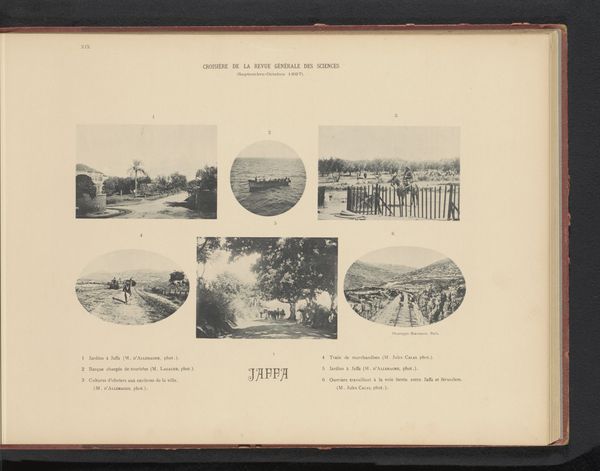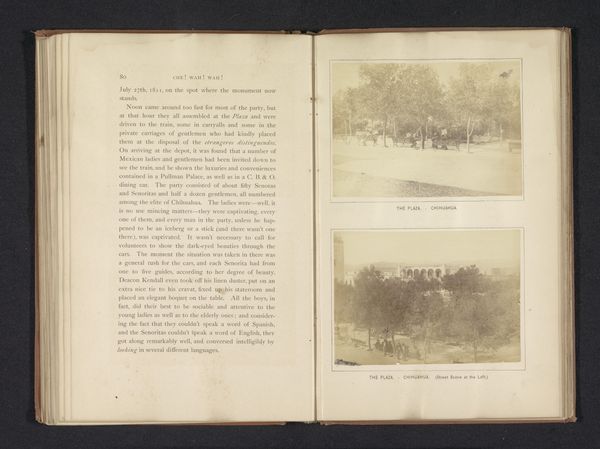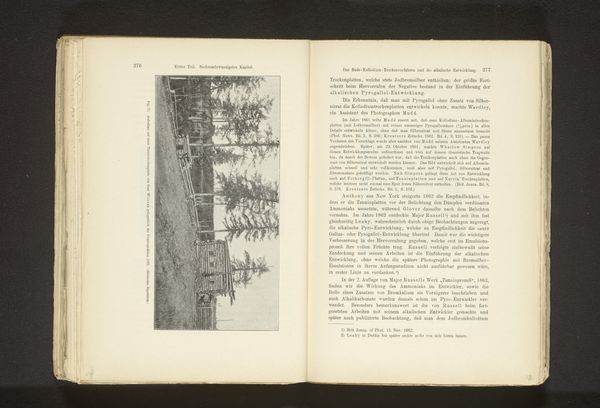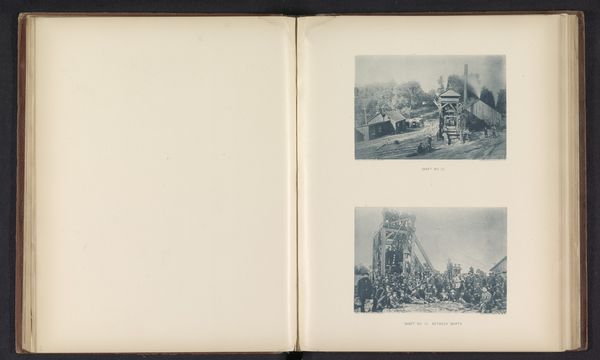
Stadsgezicht vanaf het zomerpaleis, Portret van een onbekende man bij een sculptuur bij de brug bij het zomerpaleis en Gezicht op een marmeren trap before 1897
0:00
0:00
print, photography, site-specific, albumen-print
# print
#
asian-art
#
landscape
#
photography
#
orientalism
#
site-specific
#
cityscape
#
albumen-print
Dimensions: height 214 mm, width 155 mm
Copyright: Rijks Museum: Open Domain
Curator: Oh, it's melancholic, isn't it? Faded photographs layered on a single page... it whispers of time and distance. Like pressed flowers in a forgotten journal. Editor: This is actually a page from an album of albumen prints by Jules Royer. The images, taken before 1897, are titled "Stadsgezicht vanaf het zomerpaleis, Portret van een onbekende man bij een sculptuur bij de brug bij het zomerpaleis en Gezicht op een marmeren trap.” Curator: Albumen prints! So, each sepia-toned rectangle holds a captured breath from a world meticulously framed, rendered permanent with egg whites. Isn't it incredible how something so fragile could carry so much... especially considering the story that Summer Palace holds? Editor: Indeed. The prints document the Summer Palace prior to its destruction during the Boxer Rebellion, acting as crucial visual records. What appear as "landscapes" are loaded with political narratives, speaking to imperial power and the clash of cultures. The idealized view here contrasts starkly with the violent reality it would soon face. The single figure we see—isolated near a structure—brings ideas of colonialism to the fore. Curator: You see it so politically... but I look at those endless archways of the bridge, the meticulous trees lining the distant hill—they are reaching toward the heavens! There is this delicate stillness, as if nature is holding its breath. Though of course, I do think the choice to focus on imperial grounds implicates its creation within the theatre of colonial documentation. Editor: Precisely! Early photography, while sometimes presented as objective, often reinforced power dynamics, and landscapes especially functioned to claim and romanticize space for viewers from the Western world. The album format suggests an intimate encounter with a distant "Orient", an encounter, nonetheless, deeply shaped by imperialism. Curator: Hmmm… Perhaps both. I guess what is recorded for beauty is, perhaps, always for power as well. So this album becomes a kind of ghost then— a fading echo, layered with meanings seen and unseen... Editor: Absolutely. And thinking about its physical form reminds us that even these delicate images, seemingly frozen in time, continue to acquire new layers of meaning as time moves forward. It is something precious for us to consider.
Comments
No comments
Be the first to comment and join the conversation on the ultimate creative platform.
